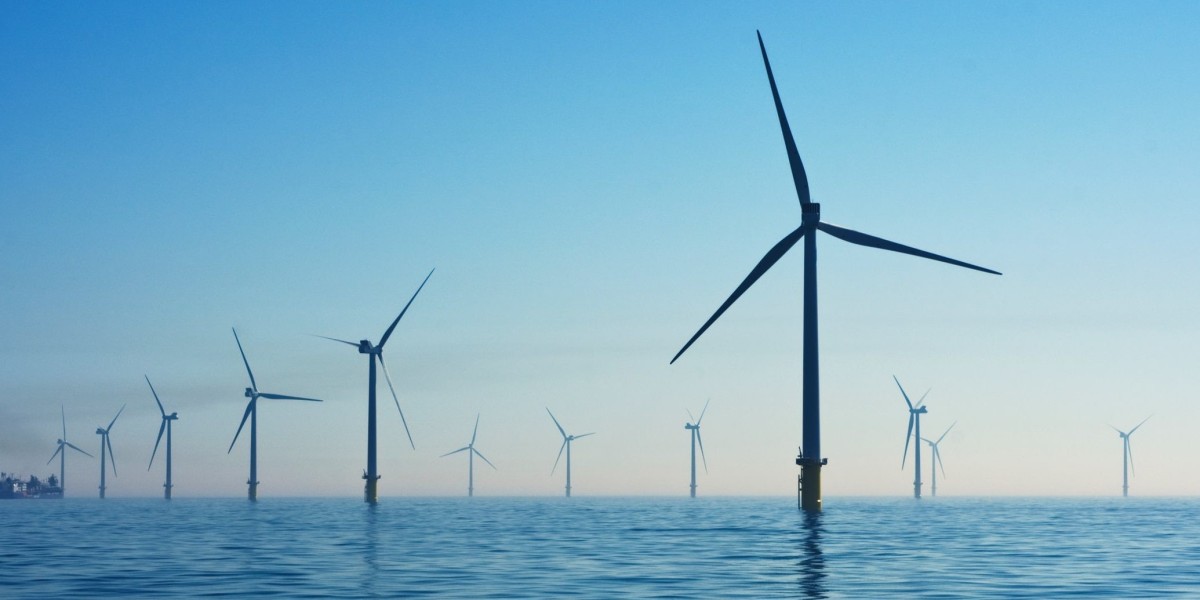The global energy sector is undergoing a massive transformation driven by the urgent need to reduce carbon emissions, transition away from fossil fuels, and support sustainable growth. Among the leading renewable sources, wind energy stands out due to its scalability, widespread resource availability, and rapidly falling costs of power generation. However, a wind turbine’s success is not solely determined by blades, towers, or nacelles — its ability to operate safely and efficiently relies heavily on a robust wind energy foundation.
The Wind Energy Foundation Market represents the critical structural backbone that anchors wind turbines securely to the ground or seabed. These foundations must withstand diverse environmental forces such as wind pressure, waves, soil conditions, and operational vibrations over decades of service life. As wind energy installations surge worldwide, especially offshore, the demand for innovative and durable foundation solutions continues to grow.
This article explores the key trends, drivers, challenges, technologies, and future growth opportunities shaping the global wind energy foundation market from 2025 to 2033.
Click Here to Download a Free Sample Report
Market Overview and Importance
Wind turbine foundations account for 15–30% of the total installation cost, depending on terrain and water depth. Their design varies based on turbine size and site characteristics — onshore or offshore. With offshore wind farms moving into deeper waters and turbines becoming larger (exceeding 15 MW), the need for high-performance foundations is increasing significantly.
The market includes a variety of foundation systems such as:
Onshore Foundations
- Shallow foundations (spread, gravity)
- Deep foundations (piles)
Offshore Foundations
- Monopile foundations
- Jacket foundations
- Gravity-based structures
- Floating structures (semi-submersible, spar-buoys, tension-leg platforms)
The shift toward offshore wind is a major catalyst for advanced engineering and material innovation in the industry.
Key Market Drivers
Expanding Global Wind Capacity
Countries are aggressively expanding wind infrastructure to meet climate targets. Massive offshore wind projects across Europe, China, and the U.S. are fueling foundation deployment.
Growth of Deepwater Installations
As shallow shore areas fill up, wind farms are moving toward deep waters requiring:
- Floating foundations
- Hybrid foundation designs
This transition significantly boosts innovation and market demand.
Larger and More Powerful Turbines
Mega-turbines (up to 20 MW class) require:
- Stronger support structures
- Optimized load distribution
- High-strength materials such as steel alloys, reinforced concrete
Government Incentives and Sustainability Goals
Tax credits, renewable energy targets, and green policies are increasing investments in wind infrastructure.
Technological Advancements
New simulation tools, automation in fabrication, and cost-efficient installation methods reduce overall expenditure and barriers to market expansion.
Market Challenges
Despite strong growth potential, the wind energy foundation market faces several obstacles:
Challenge | Impact |
High installation and material costs | Slows project execution in developing regions |
Harsh offshore conditions | Requires intensive maintenance and advanced durability |
Environmental and permitting complexities | Longer project timelines |
Logistics and transportation limitations | Especially for oversized offshore structures |
Skilled workforce requirements | Specialized engineering expertise needed |
Overcoming these challenges requires collaboration between governments, engineering firms, and turbine manufacturers.
Technological Innovations Shaping the Market
Innovation plays a pivotal role in the evolution of wind foundations:
Lightweight Composite Materials
Reducing structural weight lowers installation costs and improves stability.
Floating Foundation Systems
Key designs:
- Spar-buoy
- Semi-submersible
- Tension-leg platforms
These unlock vast deepwater resources and allow deployment far offshore where wind speeds are higher.
3D Seabed Mapping and AI Simulation
Enhanced geotechnical assessments enable:
- Accurate stress modeling
- Optimal foundation selection
Modular Fabrication
Improves ease of transport and faster offshore assembly.
Corrosion-Resistant Coatings and Smart Sensors
Real-time monitoring increases:
- Asset lifespan
- Safety and maintenance efficiency
These technologies contribute significantly to reducing the levelized cost of energy (LCOE) in wind projects.
Regional Market Insights
Europe
- Global leader in offshore wind
- Countries like the UK, Germany, Denmark, and the Netherlands dominate installations
- Strong policy frameworks and infrastructure
Asia-Pacific
- Rapid expansion in China, India, Japan, South Korea
- Major government investments in clean energy transformation
- Vast offshore potential
?? North America
- Accelerating offshore wind development along the East Coast
- Federal incentives boosting local foundation manufacturing
Rest of the World
- Latin America and Middle Eastern nations exploring early-stage wind development
- Investments driven by energy diversification goals
Competitive Landscape
The market is highly competitive with major players focusing on:
- Large-scale fabrication
- Strategic partnerships
- EPC (Engineering, Procurement, and Construction) contracts
Key companies include:
- Ørsted
- Siemens Gamesa Renewable Energy
- Vestas
- Sif Group
- Ramboll Group
- Boralex
- EEW Group
- Ballast Nedam
(and many regional specialists)
Collaborations with oil & gas marine engineering firms are increasing to support offshore expansion.
Future Market Opportunities (2025–2033)
The coming years will bring significant growth opportunities:
Opportunity | Impact |
Floating offshore wind commercialization | Opens deeper waters and new geographic markets |
Hybrid & multi-technology renewable platforms | Integration with solar and wave energy |
Digital twin technology | Predictive maintenance and installation accuracy |
Low-carbon construction materials | Increased sustainability and regulatory compliance |
Repowering and foundation retrofits | Extending life of aging onshore farms |
With sustainable innovations, total installed wind capacity is expected to expand sharply by 2033 — driving the foundation market forward.
Sustainability and Environmental Considerations
Ensuring eco-friendly development is essential:
- Habitat protection: Minimizing impact on marine and wildlife ecosystems
- Low-carbon materials: Reducing emissions footprint during construction
- Circular economy: Recycling steel and concrete after decommissioning
- Noise reduction techniques: Safer installation for marine species
These initiatives improve community acceptance and regulatory approvals.
Market Outlook and Growth Forecast
From 2025 to 2033, the wind energy foundation market is expected to maintain robust expansion due to:
Increasing offshore wind deployment
Advancements in floating foundation structures
Transition toward net-zero infrastructure
The market will benefit from rising turbine capacities and growing investments to scale renewable power accessibility globally.
Conclusion
The Wind Energy Foundation Market plays an indispensable role in enabling wind farms to operate safely, efficiently, and cost-effectively. As the world shifts towards clean and resilient energy systems, foundation technologies will continue to evolve — providing stronger support both structurally and environmentally.
With rapid offshore expansion, digital engineering, and sustainability-driven innovation, this market stands on a solid foundation for significant growth through 2033 and beyond. Supporting the global energy transition, wind foundations are truly building the base for a greener and more powerful future.



